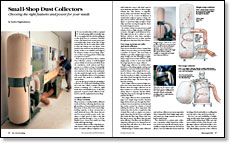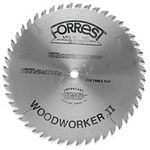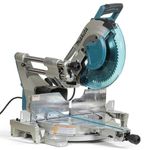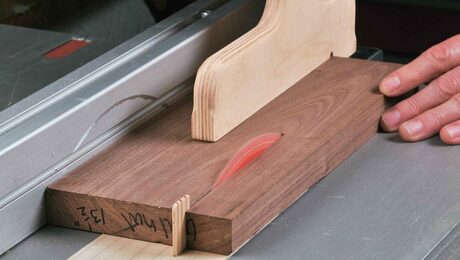Small-Shop Dust Collectors
Choosing the right features and power for your needs
Synopsis: A well-designed central dust-collection system whisks wood dust and debris from machinery, work stations, and floor. A central collection system — collector, rigid metal ducts, and flexible hose — is the approach suggested and explained here. Sawdust piling up on the shop floor is a nuisance and a fire hazard, writes Sandor Nagyszalanczy. Here, he explains why he thinks a central collection system, consisting of a collector, rigid metal ducts, and flexible hose, is the best approach. He compares central collectors to shop vacuums and says two-stage systems are safer and more efficient. He discusses cyclones, separator cans, and drop boxes, and offers advice on what to do if your collector is underpowered. He also discusses filtration and air volume that’s required for small-shop woodworking machines.
Even woodworkers with no natural housekeeping skills eventually may recognize that the sawdust piling up on the shop floor is a nuisance. Sawdust is also a fire hazard and, worse, poses serious health risks. Some of the bits of dust pumped into the air are many times smaller than the human eye can detect. Dust particles that small can stay aloft for hours, plenty of time to be inhaled and lodge in the deepest cavities of your lungs. Exposure to dust over long periods of time may even give you cancer.
These are good reasons to have a central dust-collection system. A well-designed system whisks wood dust and debris from the machinery, work stations and floor sweeps to a canister or bag. Good-quality filters capture most of the dust before the air is returned to the shop. Any small particles that sneak through can be controlled with an air-filtration device or by wearing a dust mask. The result is a healthier and cleaner shop.
You can get good results by mounting a collector on a dolly and wheeling it from job to job. But I think a central collection system—consisting of a collector, rigid metal ducts and flexible hose—is the best approach. A good central collector is tailored to suit the equipment in your shop.
Central collectors vs. shop vacuums
Shop vacuums or small portable collectors work well when collecting dust from a single machine or from portable power tools. But many of them don’t have much chipholding capacity. A shop vacuum has a small universal motor, like those that are used in most portable power tools, running at a high speed to drive a fan that draws sawdust through a 1-in. to 21⁄4-in. flexible hose. Hoses that small can clog easily with large shavings. A central collector is like a big shop-vacuum cleaner, with some important differences.
A central collector employs a powerful induction motor (the kind used in most stationary machines) to drive a largevolume fan. This blower, or impeller, moves chips and sawdust through ductwork 3 in. to 6 in. or more in diameter. A central dust collector moves a large volume of air at 3,500 to 4,000 feet per minute (fpm)—a speed just high enough to keep chips and dust moving through the ducts in a well-designed system.
From Fine Woodworking #117
For the full article, download the PDF below:
Fine Woodworking Recommended Products

Forrest Woodworker II Blade

Makita LS1219L Miter Saw

Rockler Dust Right 1250 CFM





















Log in or create an account to post a comment.
Sign up Log in